In 2025, the Web development industry is expanding rapidly, and It is really a tough decision to make if you want to choose the most suitable CMS. This is difficult when comparing a good choice such as WordPress to a modern option like Strapi. They both offer different advantages and disadvantages. So, how do you decide which one fits your project best? So let’s know which is better in battel of WordPress Vs. Strapi.
Let’s compare the features, usability, flexibility, and scalability of Strapi and WordPress to get a better understanding of both by analysis. Once you are done, you will be more aware which one CMS will help you to reach your objectives faster.
What is WordPress?
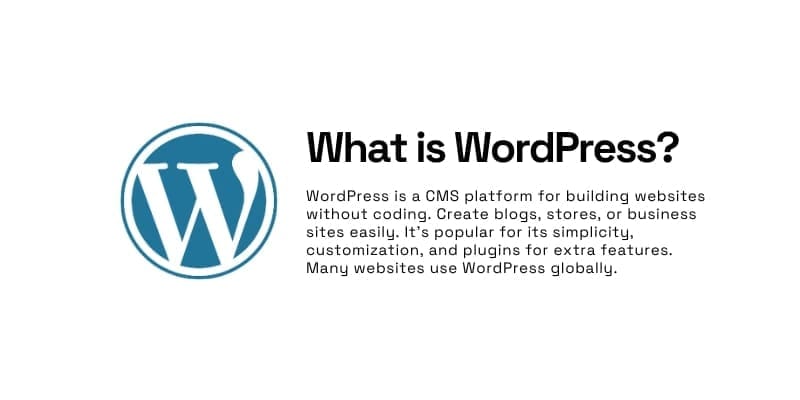
WordPress, an open-source platform is a quite popular one, used by millions of websites. It’s very simple to make it work and so great for beginners. Its pre-built themes can be used for creating blogs, ecommerce sites, or business websites.. The platform also supports third-party plugins that improve functionality. WordPress is a perfect solution for small. medium-sized also large size websites. By using WordPress, the blogger can start writing articles without learning code.
What is Strapi?
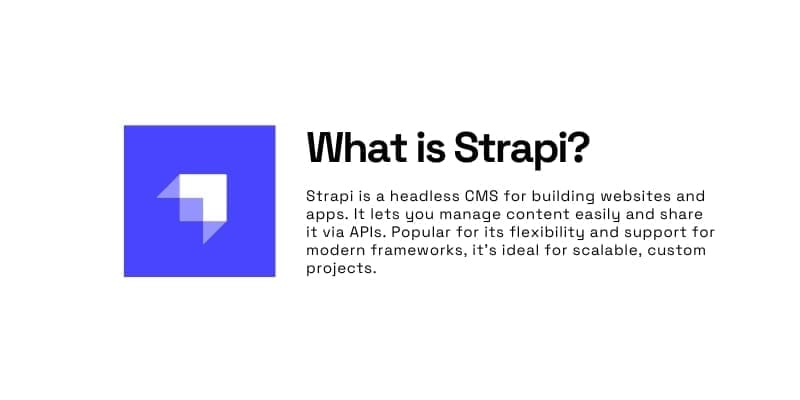
Strapi is a headless open-source CMS designed exclusively for modern web developers. Open-source headless CMS is different from WordPress because it focuses on customization and the provision of flexibility features. Developers use Strapi to connect front-end frameworks i.e. React or Vue to build applications. As it is stored on the back end, the content is delivered to the platform of your choice. A developer can develop a mobile app and retrieve the content from Strapi.
Headless WordPress vs Strapi: Choosing the Right Content Management System
WordPress is one of the most widely used content management systems (CMS) in the world, powering millions of WordPress sites across various industries. Traditionally, WordPress functions as a monolithic CMS, where the backend and frontend are tightly integrated. However, WordPress often may be adapted to function as a headless CMS, known as headless WordPress, allowing developers to separate content management from the site’s presentation layer.
Strapi CMS, on the other hand, is built specifically as a headless CMS designed for modern web development. Strapi provides a flexible, API-first approach that simplifies cms development services by allowing content to be delivered to any platform or device. This headless cms architecture offers developers the freedom to build custom frontends using javascript frameworks like React or Vue, tailoring the user experience precisely.
In the comparison of Strapi vs WordPress, one key difference is that WordPress has a large ecosystem of plugins and themes making it beginner-friendly, while Strapi is designed to provide full backend control with fewer ready-made plugins but greater flexibility.
Choosing the best CMS depends on your project needs. If you want a quick setup with a traditional cms platform like WordPress, it’s a great option for blogs, corporate sites, and ecommerce. However, if you’re focusing on scalable, multi-platform content delivery with headless cms capabilities, Strapi headless cms is a better fit.
Strapi also has a growing community and offers cloud solutions to help developers build and deploy their projects efficiently. The headless cms separates content management from delivery, enabling omnichannel experiences that are harder to achieve with traditional cms platforms.
When choosing between headless WordPress vs Strapi, understanding these differences in cms architecture and development approaches helps in choosing the right platform for your goals.
Technical Breakdown: WordPress vs. Strapi
Both WordPress and Strapi are powerful CMS solutions, but their technical foundations differ significantly. Here’s a breakdown of how they compare in terms of backend, database, API handling, and caching.
| Feature | WordPress | Strapi |
|---|---|---|
| Backend Architecture | PHP-based with a traditional monolithic setup | Node.js-based with an API-first architecture |
| Database | Uses MySQL (by default) | Supports PostgreSQL, MySQL, MariaDB, SQLite, and MongoDB |
| API Handling | REST API by default, GraphQL requires a plugin | Built-in support for both REST and GraphQL APIs |
| Caching Mechanisms | Uses WP Super Cache, W3 Total Cache, or Redis | Supports Redis, Memcached, and built-in API caching |
| Performance | Can slow down due to plugin overload | Generally faster due to lightweight, API-first design |
| Scalability | Requires heavy optimization & caching for high-traffic sites | Highly scalable and designed for microservices & headless applications |
Key Takeaways:
- WordPress is great for traditional websites, blogs, and eCommerce stores with less technical effort.
- Strapi is ideal for developers looking for a flexible, API-driven CMS with full backend control.
- If you need headless architecture, API flexibility, or multi-platform content distribution, Strapi is the better choice.
- If you want quick setup with pre-built themes and plugins, WordPress is more beginner-friendly.
Strapi vs WordPress: Understanding Traditional CMS and Headless CMS Platforms
In the ever-evolving world of content management, choosing between traditional CMS platforms like WordPress and modern headless CMS platforms such as Strapi is crucial for your project’s success. WordPress remains one of the most popular traditional CMS options, known for its monolithic CMS architecture and extensive ecosystem. It provides an easy-to-use platform for bloggers and businesses to manage content without deep technical knowledge.
On the other hand, Strapi is a headless CMS designed specifically to offer flexibility and control for developers. Strapi’s headless architecture allows content to be managed independently from the presentation layer, making it an ideal choice for building custom applications across multiple platforms. This headless approach separates the backend content management from frontend display, enabling seamless integration with javascript frameworks like React, Vue, or Next.js.
Strapi offers built-in headless CMS capabilities that support both REST and GraphQL APIs, giving developers the freedom to tailor the CMS to their exact needs. Platforms like Strapi simplify cms development and enable multichannel content delivery across websites, mobile apps, and other devices.
While WordPress provides a traditional, all-in-one solution with a large plugin ecosystem and user-friendly interface, choosing a headless CMS like Strapi allows for better scalability and customization in modern web applications. When selecting the right CMS for your project, understanding the differences between cms platforms like WordPress and Strapi, and the benefits of headless cms architecture, is key.
Whether you are choosing a headless CMS or a traditional CMS platform, comparing Strapi vs WordPress will help you select the best solution for your content needs. Strapi cloud services and community support also contribute to its growing popularity among developers looking for flexible, API-first CMS development.
WordPress vs. Strapi: Advantages and Disadvantages
| Feature | WordPress | Strapi |
| Speed | Slower due to PHP and plugins | Faster with Node.js-based architecture |
| Customization | Limited to themes and plugins. But Can be customized | Fully customizable with headless architecture |
| Security | Risk from third party plugins, requires maintenance | Built-in role-based security and API control |
| Plugins | 50,000+ available plugins | Fewer plugins, often custom-built |
| SEO | Plugin-based (Yoast SEO, Rank Math) | Requires coding or external SEO configuration |
| Scalability | Good for small to large websites | Highly scalable with API-first architecture |
WordPress is easy to use, with many plugins and themes for making blogs or online shops. However, using too many plugins may make your website slow. Regular updates are required to prevent security issues.
Strapi is complex but gives control over backend and frontend. It works well with modern technologies. Custom setups benefit from added speed and security. On the other hand, technical knowledge is required. Fewer plugins are available and hosting updates are your responsibility.
When making a new website, beginners should choose WordPress, while developers can use Strapi for full control and customization abilities.
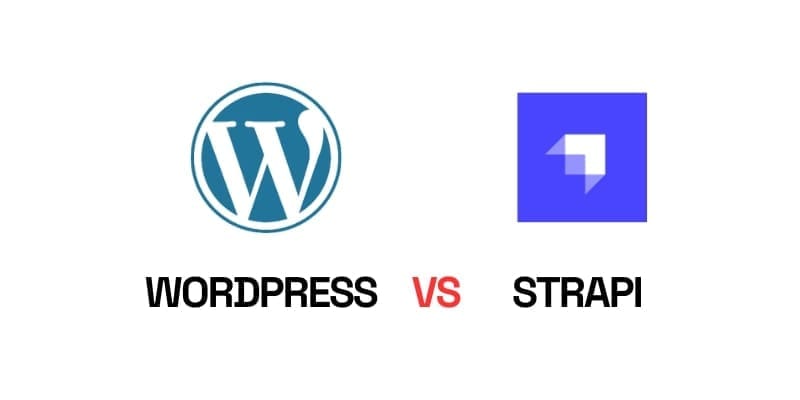
Security & Data Protection: WordPress vs. Strapi
Security is a major concern for any CMS. Here’s how they compare:
- WordPress: Relies on third-party security plugins (Wordfence, Sucuri), making it vulnerable to plugin-based attacks.
- Strapi: Built-in API security, role-based access control (RBAC), and token-based authentication for APIs.
Before diving into details, here’s a quick summary of the advantages and disadvantages of each CMS:
| Feature | WordPress | Strapi |
|---|---|---|
| Ease of Use | ✅ Beginner-friendly, drag-and-drop page builders | ❌ Requires coding knowledge |
| Customization | ✅ Plugins & themes available | ✅ Fully customizable with APIs |
| Security | ❌ Plugin vulnerabilities | ✅ Built-in role-based access control |
| Scalability | ❌ Requires caching & optimization | ✅ API-first, built for scalability |
| SEO | ✅ Yoast & Rank Math plugins | ❌ Requires manual optimization |
| Hosting Costs | ✅ Cheaper shared hosting available | ❌ Requires VPS or cloud hosting |
📌 Now, let’s take a deeper look at each platform’s advantages and disadvantages.
Advantages of WordPress
- Easy to use: The user-friendly nature of WordPress which makes it an all-time favorite amongst the beginners with very little technical skills.
- Lots of features: It has a blog, proper media management tools and also, various plugins and of course, many themes for the customization of the website.
- SEO-friendly: Its SEO structure and plugins like Yoast help websites rank well on search engines.
- Strong community support: The large WordPress community provides guides, solutions, and extensive resources for help.
Disadvantages of WordPress
- Limited customization: Users may face restrictions when trying to create highly personalized websites.
- Scalability issues: Larger websites may experience performance problems unless optimized.
- Security risks: Being widely used, WordPress is a common target for hackers.
- Complex settings: Some users find its interface and plugin management confusing.
Advantages of Strapi
- Highly customizable: Developers can easily extend features using custom plugins and APIs.
- Built-in security management: It offers user roles and permissions for better content protection.
- Multilingual support: Strapi makes creating multilingual websites simple and efficient.
- REST and GraphQL APIs: These APIs allow smooth integration with external services and modern development frameworks.
Disadvantages of Strapi
- Requires coding knowledge: Users need programming skills to get the most out of Strapi.
- Smaller community: Strapi’s community is still growing and smaller compared to WordPress.
- Limited plugins and themes: It has fewer ready-made options, which can increase development time.
Both platforms serve different needs. WordPress is ideal for users seeking quick setups, particularly for blogs, portfolios, or small businesses, while Strapi suits developers seeking flexibility and advanced customization.
Cost Analysis
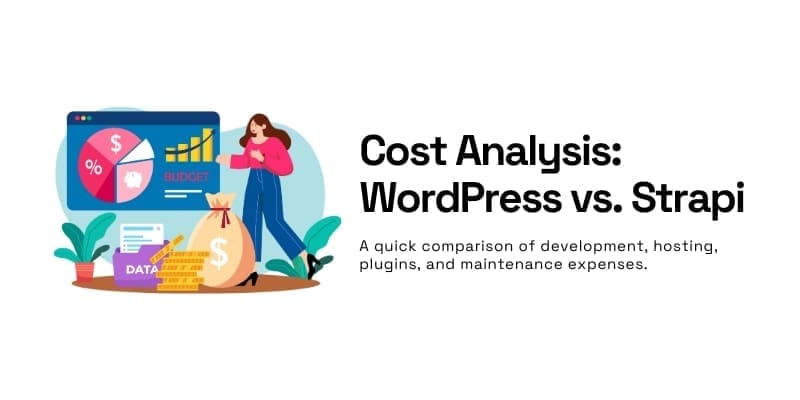
WordPress is free and quick to start with many premade templates and plugins available but using plugins can cause issues because you must keep them updated and secure. If your site is large the cost of hosting is higher. Also for Strapi you need to pay more upfront for custom setups and React or Next.js but then your maintenance costs are lower. Suppose the hosting costs $60 per year, you will be charged some $75 by the end of the year if they are due.
WordPress suits small, large and medium sized businesses budgets best by providing various predefined templates as well as plugin drafts. Strapi is a better choice for large entities due to its custom API capabilities and less dependency on third-party plugins hence facilitating things by its flexible APIs.
Hosting & Deployment Cost: WordPress vs. Strapi
When choosing a CMS, hosting costs play a major role. While WordPress offers budget-friendly options, Strapi requires a more developer-focused hosting approach. Here’s how they compare:
| Hosting Type | WordPress | Strapi |
|---|---|---|
| Shared Hosting | ✅ Cheapest option, starts at $5–$10/month | ❌ Not suitable (requires dedicated resources) |
| Managed Hosting | ✅ Fast & secure, but expensive ($30–$100/month for Kinsta, WP Engine) | ❌ Not available (requires VPS or cloud hosting) |
| VPS Hosting | ✅ Costs $20–$60/month, good for mid-sized sites | ✅ Required for Strapi, starts at $30–$80/month |
| Cloud Hosting (AWS, DigitalOcean, Vercel) | ✅ Works well but needs optimization ($50+/month) | ✅ Preferred option ($50–$200+/month depending on traffic & storage) |
| Self-Hosted (Docker/Kubernetes) | ❌ Not common for WordPress | ✅ Requires Docker, Kubernetes, CI/CD pipelines |
Hosting & Server Requirements
Each CMS has different hosting needs:
- WordPress: Can run on shared hosting, VPS, or managed WordPress hosting (Kinsta, WP Engine).
- Strapi: Requires VPS or cloud hosting (AWS, DigitalOcean, Vercel) with Node.js support.
Difference
When choosing between WordPress and Strapi, it’s important to evaluate key factors like speed, performance, development time, user experience, and maintenance. Each of these factors plays a crucial role in determining the right CMS for your website.
Speed
Due to its Node.js architecture, Strapi often provides faster performance for dynamic applications compared to WordPress. Built on Node.js, it offers fast and lightweight performance, making it ideal for dynamic applications. WordPress, which runs on PHP, has improved over the years but still lags behind Node.js in speed. If you prioritize quick loading times and real-time interactions, Strapi is the better option.
Performance
Strapi and WordPress are both great solutions for dealing with high pressures and in dealing with dynamic websites. Being lightweight, Strapi has the ability to handle the traffic very well without draining much of the server’s resources which makes it a suitable selection for applications that are performance-driven. Likewise, WordPress, which has an extensive ecosystem and proven scalability, can handle traffic of both large scale and intense workflows equally well. Both of them have steadfast performance, and the choice of one over the other is very often the need of the project itself or a particular preference of a developer.
Performance & Speed Optimization
Performance is critical for user experience and SEO. Let’s see how WordPress and Strapi handle it:
- WordPress: Requires caching plugins (WP Rocket, LiteSpeed) and CDN integration to improve speed.
- Strapi: Faster due to its lightweight Node.js architecture and built-in API caching mechanisms.
How to Optimize WordPress and Strapi for Better Performance
Both CMS platforms require optimization to ensure fast load times and smooth performance.
WordPress Performance Optimization:
- Use caching plugins – WP Rocket, W3 Total Cache, LiteSpeed Cache.
- Optimize images – Compress with TinyPNG or ShortPixel.
- Use a CDN – Cloudflare, BunnyCDN for faster content delivery.
- Minimize plugins – Too many plugins slow down WordPress.
- Upgrade hosting – Move from shared to VPS/managed hosting.
Strapi Performance Optimization:
- Enable API caching – Use Redis or Memcached for better API response time.
- Optimize database queries – Use indexing in PostgreSQL or MongoDB.
- Use GraphQL efficiently – Fetch only the required data fields.
- Host on a cloud provider – AWS, DigitalOcean, or Vercel for scalable performance.
- Implement a headless frontend – Use Next.js or Nuxt.js for faster rendering.
📌 By applying these optimizations, both WordPress and Strapi can deliver high performance for any website or application.
Integration Capabilities
Many projects require integration with external services and tools, and thus it is an essential consideration that you should be concerned about. Although both WordPress and Strapi have integration options, their approaches are varied:
It is easy to integrate WordPress with tools such as marketing platforms, payment systems, CRMs, and social media through a wide array of plugins. While popular ones like WooCommerce and Mailchimp are good options for simple tasks, the website can become slow if there are too many plugins, and it needs frequent checks. Strapi, a headless-designed application, smoothly integrates with contemporary web frameworks like React and databases such as MongoDB. In order to connect the service, the developers will use the technology of the REST or even GraphQL, making it a good fit for projects needing custom connections.
SEO & Content Management: WordPress vs. Strapi
- WordPress: Built-in blogging tools, SEO plugins like Yoast & Rank Math, supports structured data.
- Strapi: SEO customization requires coding, better for API-driven content distribution.
Support and Development
WordPress takes the crown when it comes to support and development. Its massive community, countless plugins, and ready-made themes provide endless possibilities for customization. Users can easily find solutions to problems through forums, tutorials, or support groups. Strapi is a growing project with a smaller, but dedicated, community. While support is expanding, it hasn’t reached the same level of resources and troubleshooting assistance as WordPress.
User Experience
Strapi is becoming the front runner in content management tools and API integration due to its new and simple user interface that not to mention developers love. Since the documentation is clear and well-organized, it gives a possibility to create and connect content smoothly and to interoperate with other systems.
On the other hand, WordPress works to the best of its popularity mainly thanks to its familiar and customizable interface. Since it has a wide range of plugins as well as many already built features, it is preferred by users. However, both systems qualify as productivity amplifiers, with Strapi being the perfect platform for API-led on-demand workflows and WordPress being the idyllic niche for those who want a fully flexible and strong plugin ecosystem.
Maintenance
Strapi’s simplicity and having few components make it easy to maintain. Updates are done in no time and leads to a low possibility of things getting disrupted. For bloggers, WordPress is the best platform for them since there are many themes and plugins as well as other features. However, it is necessary to keep everything updated in order to avoid problems. Strapi is the best option for those who are looking for convenience in their websites, whereas WordPress is more suitable for projects with a lot of customization options.
Scalability
Strapi has a very high scalability rate, although it may be considered as a flexible design from a headless CMS standpoint. The solution to this is the framework that can be adapted for bigger traffic numbers with merely a few minor changes in the code. At the same time, WordPress is also powerful in this respect but to scale out the platform, the setup requires thorough performance optimization, caching, and some custom work with plugins. Besides, both also build the foundation to assist you in this regard, Strapi is easy to use while WordPress has multifarious ways to optimize your platform.
Multichannel and Omnichannel Capabilities
With content being consumed on websites, mobile apps, and IoT devices, multichannel delivery is essential:
WordPress is no longer bound to its web environment, as its list of features now includes multi-channel delivery through REST APIs and plugins that help to distribute content to the various platforms. In contrast, Strapi, which is a headless CMS originally, takes a different perspective by placing great emphasis on flexible API-based delivery.
It, designed as a headless CMS from the start, takes a different approach by focusing on flexible API-driven delivery. Developers can create content once and seamlessly share it across web apps, mobile apps, smart devices, and more. Both platforms are capable of multiple distribution, with WordPress being able to do so through its numerous features, while Strapi is capable of doing it through a built-in multichannel symmetry.
Multichannel Content Delivery & API Integrations
- WordPress: Primarily used for websites but supports REST API for external integrations.
- Strapi: API-first, making it ideal for delivering content to websites, mobile apps, and IoT devices.
Who Should Use WordPress and Who Should Use Strapi?
Each CMS serves different purposes. Here’s a quick guide to help you decide:
| Use Case | Best CMS |
|---|---|
| Personal blogs & small websites | ✅ WordPress |
| Corporate or business websites | ✅ WordPress |
| E-commerce (WooCommerce-based) | ✅ WordPress |
| Headless CMS for custom apps | ✅ Strapi |
| Mobile apps with API-driven content | ✅ Strapi |
| Enterprise-level content management | ✅ Strapi |
📌 If you need a fast, plug-and-play website, WordPress is the right choice. If you’re a developer working on scalable, API-driven applications, Strapi is better suited for your needs.
Which one should you Pick?
WordPress is easy to use and good for any project size. You can use it for a blog, small business website, or a big online store with different plugins and themes. Beginners overall find its design and navigation simple for getting work done without coding skills.
Strapi is suitable for those who work on bigger and more complex projects with advanced setups. But it can be costly due to the need to do more coding and creating. To use it effectively, you would have to be familiar with React JS, Next JS, and MongoDB databases among others.
If you are on a tight budget and need a simple or a scalable solution, then go with WordPress as it is a common choice for such scenarios. However, if you need a very flexible solution with custom development then using Strapi as an alternative will benefit you.
Migration from WordPress to Strapi (Challenges & Steps)
Migrating from WordPress to Strapi requires careful planning. Here’s a step-by-step approach:
Step 1: Export Content from WordPress
- Use WordPress Export Tool to export posts, pages, and media.
- Convert the XML/JSON file into a format that Strapi can import.
Step 2: Set Up Strapi
- Install Strapi on your server or cloud (AWS, DigitalOcean).
- Create a content model matching your WordPress data structure.
Step 3: Import Data into Strapi
- Use Strapi APIs to migrate posts, pages, and images.
- Map SEO metadata, categories, and custom fields correctly.
Step 4: Set Up Frontend & API Connections
- Connect your React, Vue, or Next.js frontend to Strapi.
- Test API calls for blog content, media, and custom data.
Step 5: SEO & Redirects
- Set up 301 redirects to keep SEO rankings.
- Verify Google Search Console & sitemap indexing.
📌 Migrating requires technical expertise, but it offers more flexibility and scalability in the long run.
Ecosystem and Future Growth
Automattic leads WordPress making it stay modern. They added the WordPress REST API and the Gutenberg block editor. These updates keep WordPress useful and adaptable for web development projects.
Strapi is an API-first CMS. It connects easily with microservices, JAMstack, and decoupled front-end frameworks. Its modular architecture allows it to adopt the latest technologies. Both platforms provide the flexibility needed to succeed in an ever-evolving web world allowing finding solutions that fit.
Lastly
Both of them offer distinct advantages, but your choice should depend on your project needs. WordPress is perfect for quick setups, blogs, and small businesses, while Strapi excels in custom, scalable solutions with API-driven flexibility. For expert help building your website, contact Creation Wave today.
Searching for Developers to help you create your website?
You don’t need to look anywhere else for developers. In Creation Wave, we offer everything digital under one roof. Our team provides access to a talented pool of developers ready to build exceptional websites using both Strapi and WordPress.
FAQ
1. Is Strapi better than WordPress?
It is for projects that require custom APIs, flexibility, and multi-platform content delivery. WordPress is the best option for content websites, blogs, and also for small businesses.
2. What is better than Strapi?
On the contrary, tools like Contentful or Sanity will be a more suitable option in case you need them to come with functionalities like a content delivery network (CDN), real-time editing, or faster setup for non-developers.
3. Which is better, WordPress or CMS?
According to WordPress, it is a CMS that is built for traditional websites. Nevertheless, a headless CMS like Strapi enables you to have a significantly higher performance and flexibility of the use case for the app since it can be deployed to multiple platforms.
4. Is Strapi the best headless CMS?
It is a highly customized, open-source tool, and it has been designed by developers for developers. Even if it is one of the most popular headless CMS solutions, to accommodate different types of projects, some others such as Contentful or Sanity may be considered.



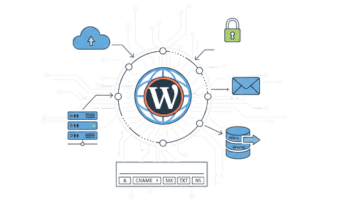

Fantastic beat ! I would like to apprentice while you amend your web site, how could i subscribe for a blog site? The account helped me a acceptable deal. I had been a little bit acquainted of this your broadcast offered bright clear concept
Comments are closed.